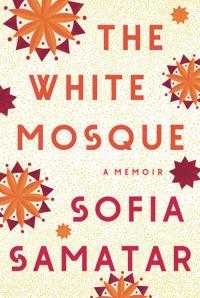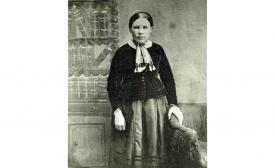Volume 27, Number 1
The holy paradox of modern Mennonite identity
I grew up happily embedded in white Mennonite culture in rural Manitoba. Our family regularly travelled to Winnipeg and on the edge of the city we would pass a Chinese Mennonite church. I never visited, heard about, read about or asked about that church. I just saw that sign and wondered vaguely how we all fit together.
One-anotherness in Christ
Based on my first-hand experience with the Mennonite church in Canada and the U.S. over the past 18 years, I suspect that far less than 10 percent of primarily white Mennonite congregations are genuinely interested in embracing or pursuing a truly intercultural church.
Readers write: January 16, 2023 issue
Feeling like a pandemic leper
I really appreciate the three articles Will Braun wrote regarding the polarization of vaccines (“The sweet solace of polarization,” Oct. 3, Oct. 17, Oct. 31, 2022).
Maria Kroeker
In 1893, Maria Kroeker married Johann Neufeld in Reinland, Man. The couple moved to Lost River, Sask. in 1911. Then, in 1926, when the Saskatchewan government insisted that Mennonite children attend government schools, Maria and Johann moved their 11 children to Paraguay, where they helped establish the village of Bergthal.
What exactly do regional churches and MC Canada do?
Annual congregational meetings are just around the corner, a time when budget lines designated for regional churches are often queried. I’m reminded that many people do not have the history or know the people who stand behind the dollar figures.
On boycotting church
I was a young adult in the time of the boycotts of South Africa. They were debated at length among my friends. How could it be right to boycott oranges from South Africa when that would negatively impact the masses of farm labourers in the country?
Chin song adds breadth to newest hymnal
In 2017, the Calvin Institute of Christian Worship awarded members of the Voices Together hymnal committee a grant to explore Mennonite worship in communities that worship primarily in languages beyond English.
Makin’ space
My youngest son, Cai, has developed a passion for working out, so for Christmas he asked for a home gym. More specifically, an Olympic barbell, bumper plate weights, an adjustable bench and a power rack. It was pretty expensive, so he offered to pay for half, and said, “You can use it too, Dad! It would be something we could do together.”
Apocalypse, peace, identity
 When Sofia Samatar took an American literature class at Goshen (Ind.) College more than 20 years ago, she wrote a paper about Walt Whitman, who is sometimes called the “good grey poet.” Among the thousands of student papers I read, this one stands out.
When Sofia Samatar took an American literature class at Goshen (Ind.) College more than 20 years ago, she wrote a paper about Walt Whitman, who is sometimes called the “good grey poet.” Among the thousands of student papers I read, this one stands out.
Anabaptist Worship Network supports worship and song leaders
Congregational needs for worship resources and support skyrocketed when the pandemic roared into full swing and people struggled to create meaningful worship experiences in an online world.
Backyard bakery creates community
Socks, socks and more socks
The youth group at United Mennonite Church of Black Creek were thinking about Christmas stockings in December, but not what they would find in their own. They were all about supplying them to the less fortunate.














